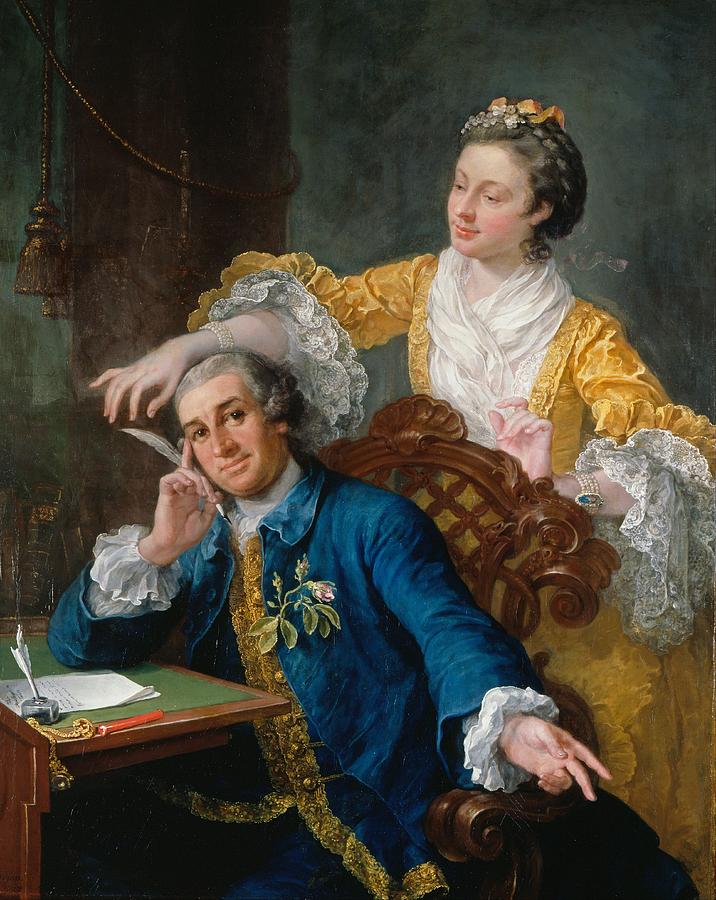Harriman-Smith, James, ‘Garrick’s Muse? Eva Maria Veigel and Her Husband’, in With a Grace Not to Be Captured: Representing the Georgian Theatrical Dancer, 1760-1830, ed. by Michael Budern and Jennifer Thorp, Music and Visual Cultures (Belgium: Brepols, 2021), pp. 30–45

William Hogarth’s 1763 portrait of Eva and David Garrick appears to celebrate its subjects’ powers of discernment and cultural prominence. On the desk lie the freshly-penned opening lines of the prologue to Samuel Foote’s Taste. In the shadows a volume of Shakespeare reminds us of the role that David played in creating our national poet, while the pose of Eva draws on a long iconographical tradition of the genius-inspiring muse. Yet Garrick refused to purchase this apparently laudatory work. This chapter will explore some potential reasons for this decision, while enriching our understanding of both the portrait and the figures it depicts.
By celebrating the taste of the Garricks, Hogarth worked on dangerous ground. As a soldier’s son and former wine-merchant, David had had to work hard to become a gentleman actor: such a proclamation of his status risked jeopardising it. We can read this portrait critically. Is Eva here not just a muse but a guarantor of the thespian’s social graces? And is her careful pose a reminder of her own time as a dancer, albeit under the protection of noble patronage? Such questions point to a larger virtue of this portrait: it encourages us to remember that David Garrick was not a solitary genius, but rather part of a double-act, and one which needed all the resources of both partners to maintain its prominence.